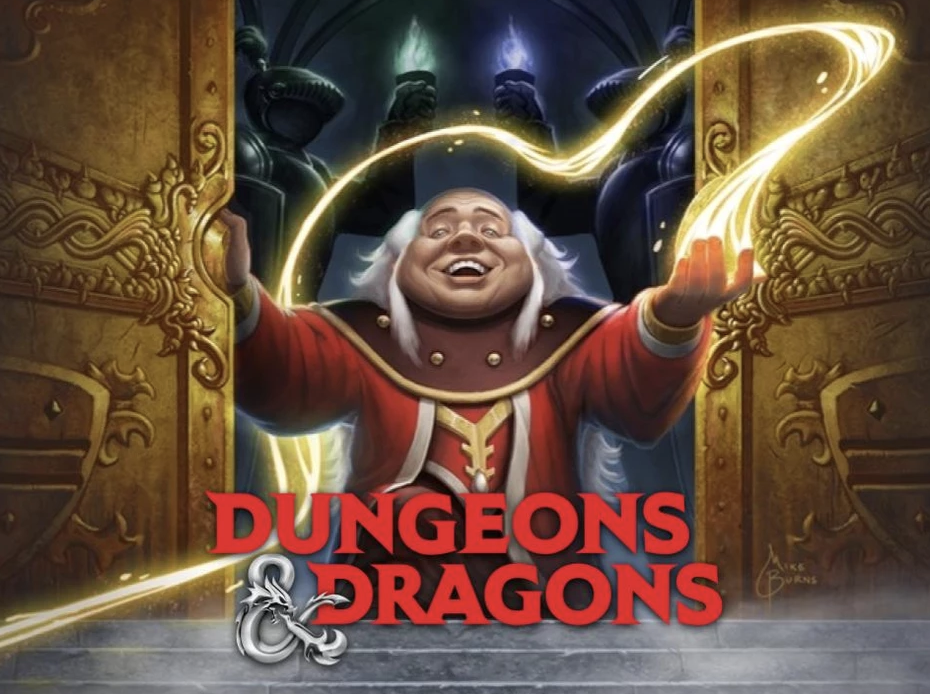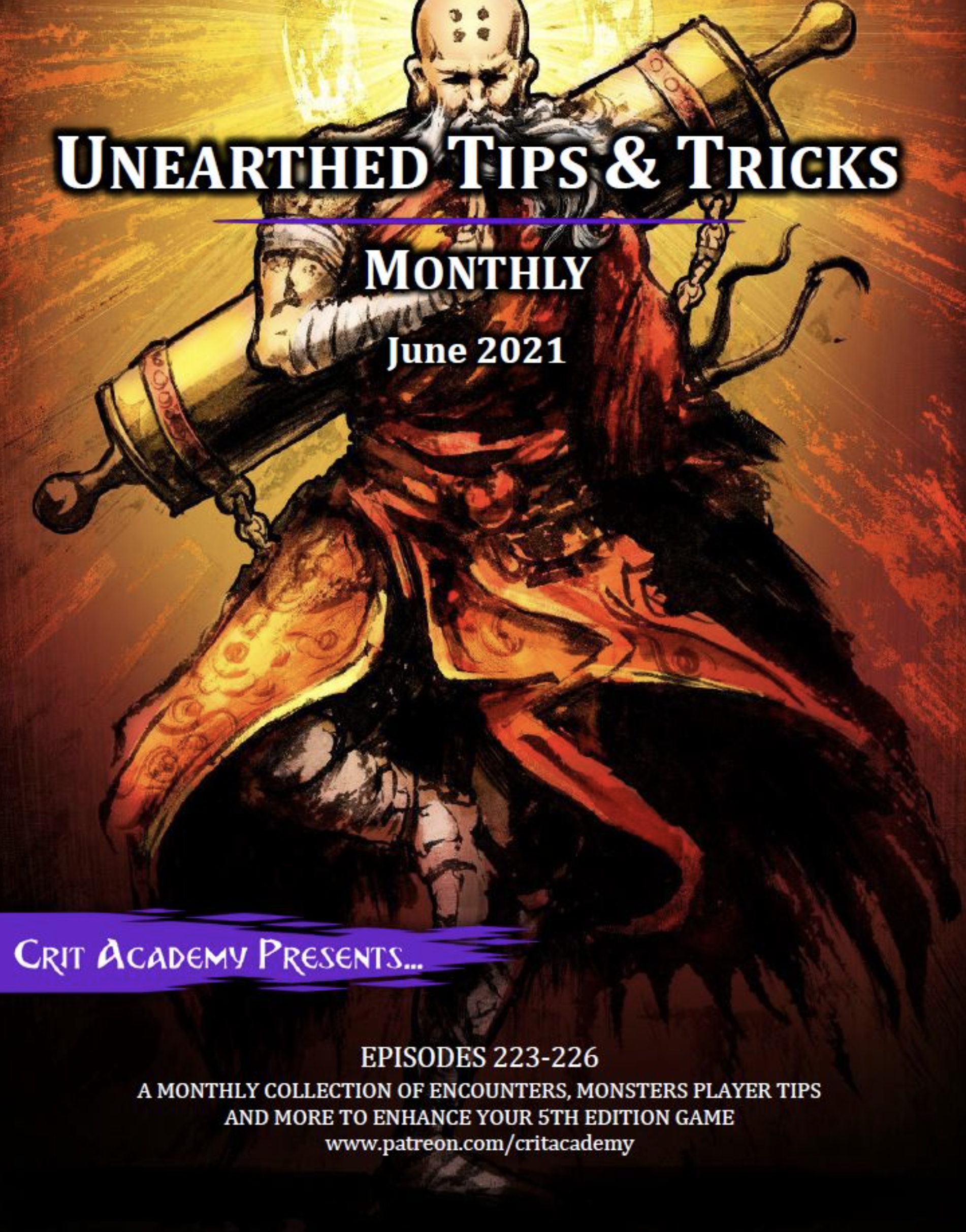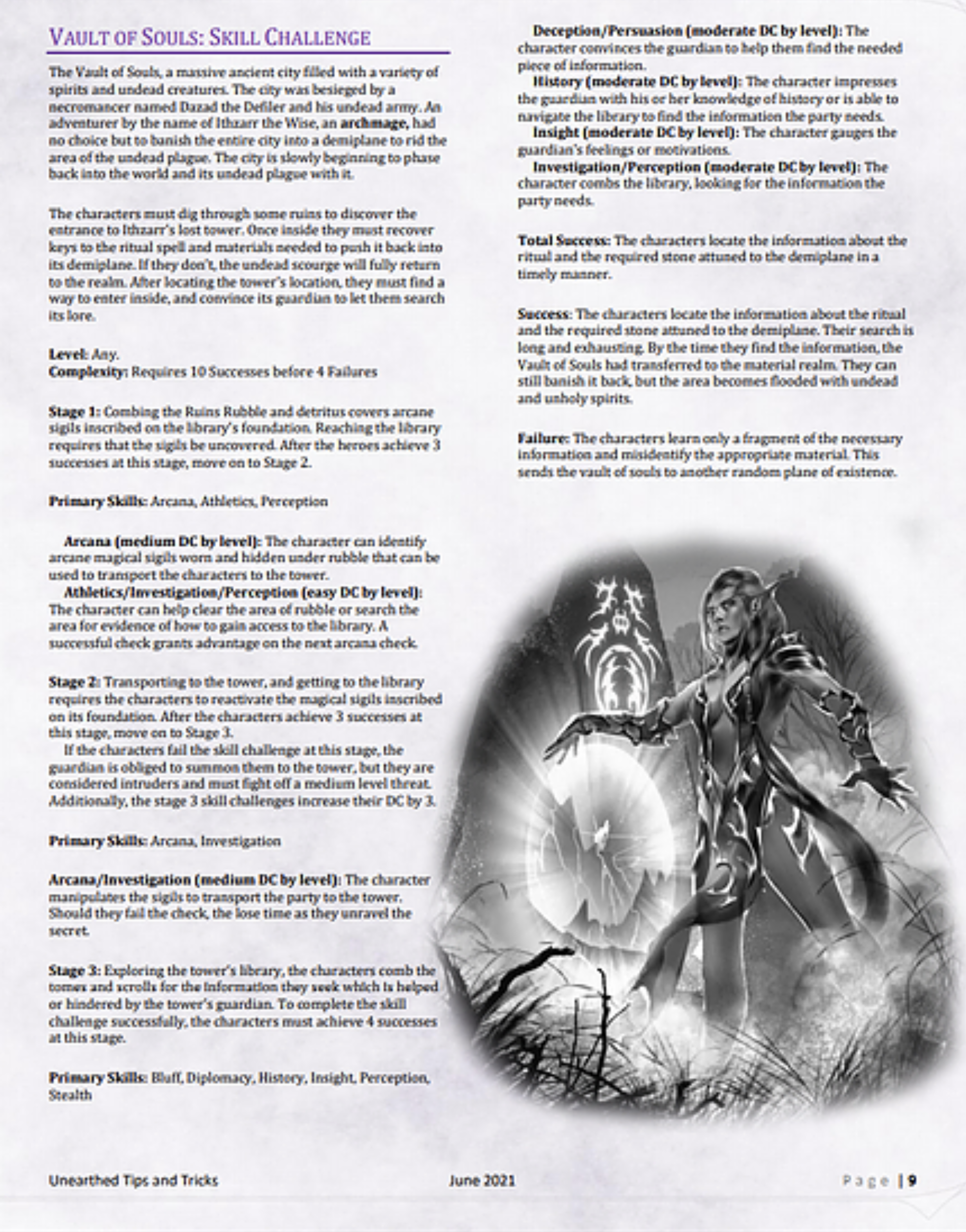5 Tips to get you started as a great Dungeon Master in Dungeons and Dragons
Do you want to be a better D&D Player?
Do you want to become an amazing Dungeon Master?
Then subscribe NOW to get notified when we publish new D&D Tips and Tricks videos
If you're just getting into D&D or just stepping behind the Dungeon Master's screen. It can be an intimidating process. The DM wears many hats and has a lot of work when compared to a player at the table. But fear not! We are going to give you 5 tips that will help you jump into the role as easily as a warlock casting eldritch blast.
1. Start Simple: Use Published Adventures
As a Dungeon Master, it is extremely easy to get overwhelmed. Everyone wants to delve right into creating a full-on unique world. While this is certainly a fun aspect of any roleplaying game. It is also a bag of holding full of work.
You can significantly cut down on not only your stress of running a game but also the prep work involved. Prewritten/published adventures can cut out a lot of the time sync that goes into being a Dungeon Master (DM). Wizards of the Coast has some great starting adventures. The official Dungeons & Dragons Starter Kit includes one of my personal favorite and well-written adventures “Lost Mines of Phandelver”. It provides a great story, introduction, and progression to both new players and DMs. You can also find a dragon’s hoard of content free and others for just the price of a cup of coffee on the Dungeon Masters Guild. A community-driven D&D publication site.
So while you may want to jump right into the thick of it and create an entire world. Start simple and use a published adventure or two before taking on such a huge task. It’s worth noting that while it does help to read the adventures in their entirety first (This helps learn how everything is connected), it’s not entirely needed. Just keep ahead by a few pages as you run, and you’ll be golden. Lastly, one of the largest advantages to the published content is that it gives you plenty of read-aloud text and descriptions to help you along. This way you don’t need to come up with good descriptions on the fly.
Knowing the Rules: You don’t need the rules memorized.
One of the important jobs of being a Dungeon Master in Dungeons & Dragons is making calls based on the actions of the player’s characters and other creatures in the game world. There is a strong misconception that you need to fully understand all the rules before you play. Honestly, this couldn’t be further from the truth.
Instead, all you need is three things. A general idea of how to determine when a character should roll a skill check, and what Advantage and Disadvantage is and basic combat actions. These three concepts drive almost the entirety of D&D. While they can be complex, understanding them in their simplest form will allow you to run a game full of fun and adventure. Let’s break them down.
When should a character roll a skill check?
This one is easy. Anytime a character wants to attempt a task that isn’t something they can just automatically do. A skill check is required. For instance, an unlocked door doesn’t require a check to open. But a locked one may require someone to break the door down or pick the lock.
As the DM we just ask ourselves which one of the skills makes sense for the check. Breaking a door is a brutish tactic, so Strength (Athletics) makes the most sense. For picking the lock, it requires nimble fingers so Dexterity will be the skill that makes the most sense. But a special tool called Thieves’ Tool kit is required. So you call for a Dexterity (Thieves' Tool) kit check to pick the lock. If the character is proficient in either you add the proficiency bonus to it.
Now you just compare their roll to a Difficulty Class or DC that you get to set based on how hard you think it is to accomplish). Just remember, easy tasks are a DC 10 or lower and Hard tasks are 20 or higher. That’s it. Then as DM you narrate the result. Continuing on with the door example. If a big brute busts through the door a simple description to go along with the roll. We consider it a medium difficulty to break down the door. We set the DC to 13. The player rolls a d20 and adds their Strength (Athletics) score to it, which is a +4. They get a 12 on the d20 and add the 4 for a total of 16. So you narrate the scene. “Toruk takes a deep breath and smashes the door with a mighty kick. The latch gives way to sharting wood as the door swings open.” The beauty is you can describe the event however you want. Just make sure it's full of flavor.
When you call for a dice roll, remember there should always be an outcome. We call these story branching. Whether it's a high roll or low failure, success or failure, the story should always move forward.
Running Combat in its Simplest Form
Of the entirety of Dungeons & Dragons, combat is the most structured aspect. That’s why the Player’s Handbook has more than 70% combat rules. While it is extremely complex, there are some simple guidelines that make it straightforward to run. Below is a breakdown.
Combat Step by Step
Determine Surprise. The DM determines whether anyone involved in the combat encounter is surprised. If they are not aware they are being attacked, they are surprised and can’t take an action in their first round of combat.
Establish Positions. The DM decides where all the characters and monsters are located. Given the adventurer’s stated positions in the room or other location, the DM figures out where the adversaries are and how far away.
Roll Initiative. Everyone involved in the combat encounter rolls initiative, determining the order of the combatant's turns. Roll a d20 and add the Initiative modifier (usually just Dexterity modifier).
Take Turns. Each combatant in the battle takes a turn in initiative order. Each combatant has an Action, Movement, and potential bonus or reaction depending on features and spells.
Begin the next round. When everyone in the battle has had a turn, the round ends. Repeat step 4 until the fighting ends.
This is all you really need to know to get you started. You can print and paste it on your DM screen for reference. Fortunately, all the player characters' features and spells tell them exactly what it does. Just ask them to read it aloud as you learn the game.
The Golden Rule: Advantage & Disadvantage Makes Ruling Simple
The core of Dungeons & Dragons is rolling the twenty-sided die (d20) and adding any relevant modifiers. Advantage and Disadvantage is a simple mechanic for punishment or reward. How does it work? Simple! When a character has Advantage, they roll two d20s and take the highest. When they have Disadvantage, they roll two d20s and take the lowest. Multiple sources do not stack but can offset each other. So a character who has Advantage AND Disadvantage just rolls one d20.
The reason this is considered the golden rule is because when you’re unsure of a ruling or the rules don’t cover something and still want to allow a roll. You can leverage this system. As DM if you decide a character is in a favorable situation grant them Advantage. If you feel they are in an unfavorable situation, impose Disadvantage.
This simple rule will make your life as a DM significantly easier.
Knowing the Rules: Write it Down for Later
As a DM, especially a new one. It can be tempting to want to pop open the book when you’re unsure of what to do. As discussed above, it's best to make a ruling in the moment to keep the game pace moving. There are few things more boring than spending half the session of a game looking up the rules. Instead, just use the golden rule, write it down, and look it up later. Alternatively, you can make a ruling and ask another player to look up the rule in your place. In either case, be open with the table. Tell them you’re not sure and this is the decision you will make for now. After you discover the correct rule or detail, share it with the table at the end of the current or start of the next session. That way everyone knows the correct ruling moving forward.
Rules aren’t Written in Stone: Understand that every rule can be broken or tweaked
As a new Dungeon Master, it is often best to keep the rules at the forefront when making decisions. But we often find our players wanting to do something beyond the bounds of what a feature or spell does. This doesn’t mean we can’t accommodate those players, so long as it makes sense. Let’s discuss an example.
A group of my adventurers delved deep into a mountain where the heat was unbearable. They had no way of knowing this would be the challenge they would face. Of course, the heat tortured them and forced them to make saving throws or lose Hit Dice. One of the characters, a wizard, had access to the ray of frost spell. This allowed her to do cold damage. She asked if she could focus and channel that spell into a circular globe to cool the area.
Obviously, the spell doesn’t allow any of this. But, let's think about it. Is this something that should be feasible? Sure she can cast cold magic. Is it going to break the game? I don’t think so. Is it going to be fun for her and the group? Absolutely. So I allowed it. I had to come up with a way to get it to mechanically work. So I used existing mechanics. I told her she would need to first succeed on an Arcana check and then needed to maintain concentration to keep it going. So, because this granted a favorable situation for the characters (using the golden rule) I allowed them to have Advantage on the saving throws against the heat. Now, not only did the player get rewarded for creativity but aided her allies in a way that may not have been something she could do as it wasn’t on the character sheet. As DM, I made a call that would be fun for everyone and we moved on deeper into the dungeon.
Actions: They all have Consequences
The term murderhobo comes from D&D table groups who take huge pleasure in burning down every inn they stay in or killing every NPC they meet. While this is certainly a form of play some enjoy, it should be clear to everyone at the table what the expectation of the game is. A great time to set these expectations is what is known as Session 0. Where all the players get together and discuss the type of game they are all going to play. What they like and don’t like, etc. Regardless of what the group decides, as Dungeon Master you want to always hold the player characters accountable. The fantasy world isn’t lawless. Quite the opposite. Murdering innocent, damaging property, even drawing weapons in the street without just cause are all against the law to some degree. We covered these in great detail on our Laws of the Land episode in which we discuss specific details on punishments and crimes. When player characters take actions that would be against the law or frowned upon, make sure the world around them reacts.
Let’s have a few examples.
When the characters try to pilfer from a merchant and get caught, not only would the merchant call the guards. The player characters shouldn’t be surprised when their face is plastered on every merchant booth in the surrounding villages with a warning of their actions. This could lead to a number of actions; likely price gouging or worse, no service at all.
When the characters do something undeniably evil and NPCs and the world around them see it. Bounties are likely to pop up on their heads. Perhaps even having them stumble upon another group of adventurers who have come to end their dastardly deeds.
Whatever the case may be, actions have consequences, even for adventurers. From petty theft to bad-mouthing a powerful political person who can throw them in jail. Keep these things at the forefront of your mind when players take action. It’s worth noting that all actions lead to negative consequences. It should be used to reward the unexpected action.
Takeaway
Dungeons and Dragons can be as complicated or as basic as you want to make it. Some of the best games are those that have the simplest base rules but have the most freedom in character growth and action. I can promise you, that if you just focus on running a fun and engaging experience for both you and the players. You will have endless memorable moments with your friends. And nobody is going to remember whether it was the right ruling or not. The more games you play, the easier it will get and your knowledge will grow naturally. This list isn't all-encompassing, as the game has a lot of parts to it. But hopefully, these will make the jump behind the screen as smooth as if you had cast feather fall
Keep your blades sharp and spells prepared heroes!
Sign Up and get a FREE copy of our best-selling D&D Supplement: Challenge Accepted. You will also be entered to win our weekly RPG PhatLoot Giveaways!
Make sure to subscribe to our show here and Youtube so we can help you on your future adventures as well as a chance to win cool prizes each and every week. Make sure to check out our fellowship members as well. Or support us on Patreon and get weekly Dungeons and Dragons loot!
If you're interested in advertising with us, click here to learn more.
*Crit Academy is an Affiliate of Amazon, DMsguild and DriveThruRPG*










